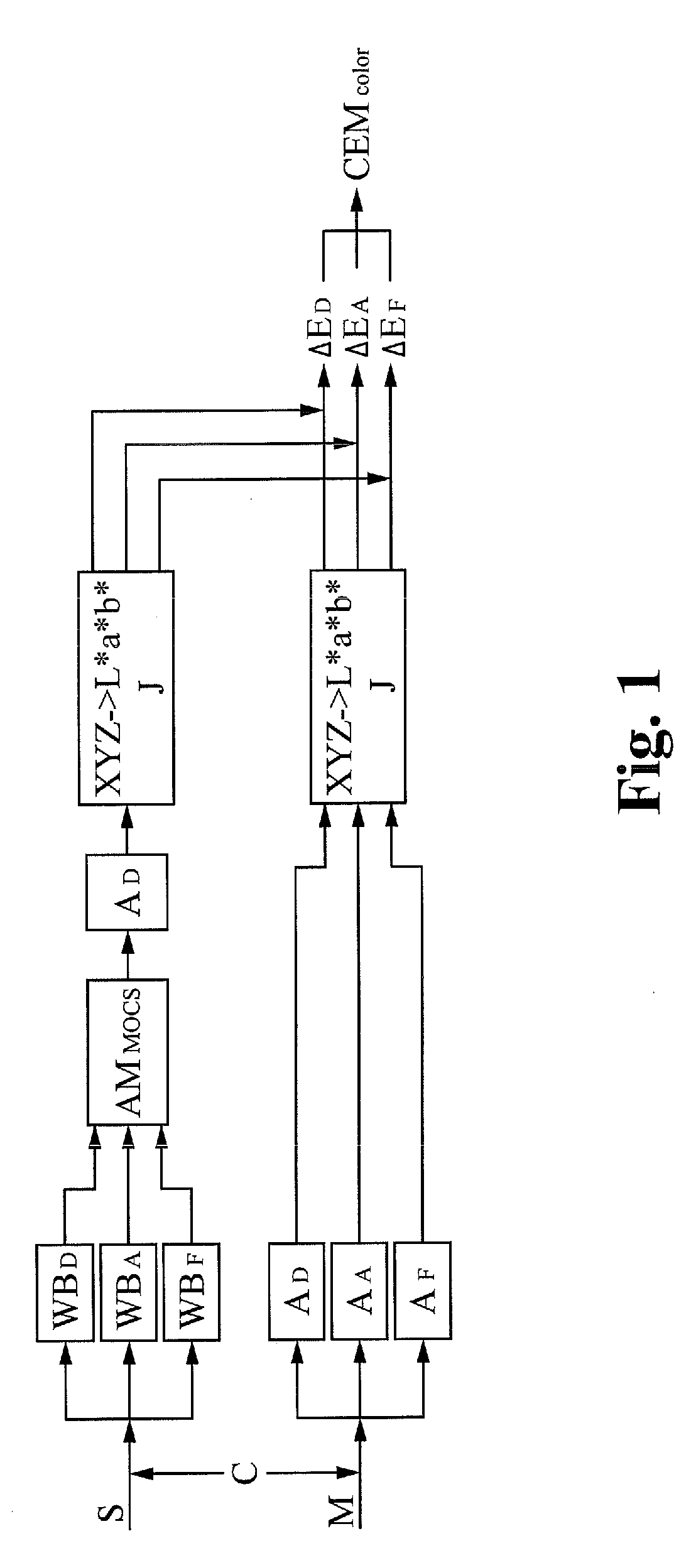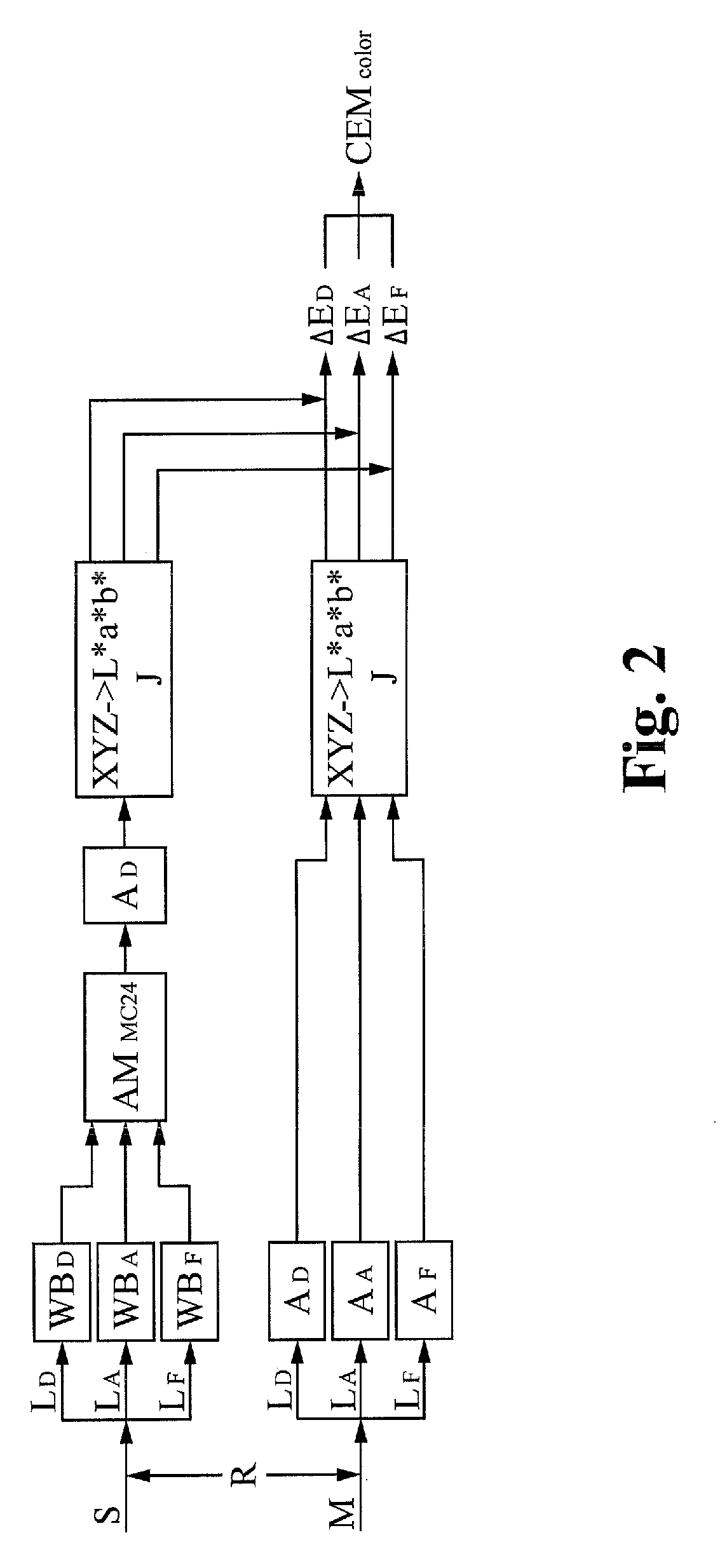Illuminant independent color calibration using colored rays approach
a color calibration and color technology, applied in the field of illumination, can solve problems such as taking time to transfer data
- Summary
- Abstract
- Description
- Claims
- Application Information
AI Technical Summary
Benefits of technology
Problems solved by technology
Method used
Image
Examples
Embodiment Construction
[0024]The objective of Digital Still Camera (DSC) color calibration is to find an optimal Adjustment Matrix (AM) which minimizes the perceived color error of a given target set of color patches as shown in FIGS. 1 and 2. At a designing stage, a master calibration camera is usually calibrated using a reflective Macbeth ColorChecker under multiple viewing illuminants. However, since the Macbeth ColorChecker includes 24 patches, it is not suitable for calibrating DSC products at the factory floor due to the computation and efficiency requirements. Therefore, at the manufacturing stage, a color chart referred to as TE106 is widely used for calibration under multiple viewing illuminants. The difference of calibration targets in design and manufacturing stages introduces an additional error, and a common chart is acquired to unite the two processes. Furthermore, current calibration for both the master calibration camera and DSC products are conducted under multiple illuminants, in other w...
PUM
 Login to View More
Login to View More Abstract
Description
Claims
Application Information
 Login to View More
Login to View More - R&D
- Intellectual Property
- Life Sciences
- Materials
- Tech Scout
- Unparalleled Data Quality
- Higher Quality Content
- 60% Fewer Hallucinations
Browse by: Latest US Patents, China's latest patents, Technical Efficacy Thesaurus, Application Domain, Technology Topic, Popular Technical Reports.
© 2025 PatSnap. All rights reserved.Legal|Privacy policy|Modern Slavery Act Transparency Statement|Sitemap|About US| Contact US: help@patsnap.com



